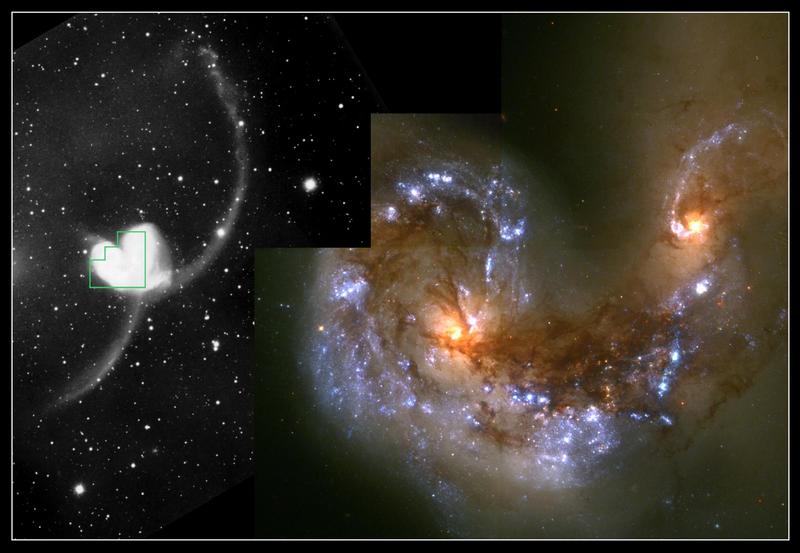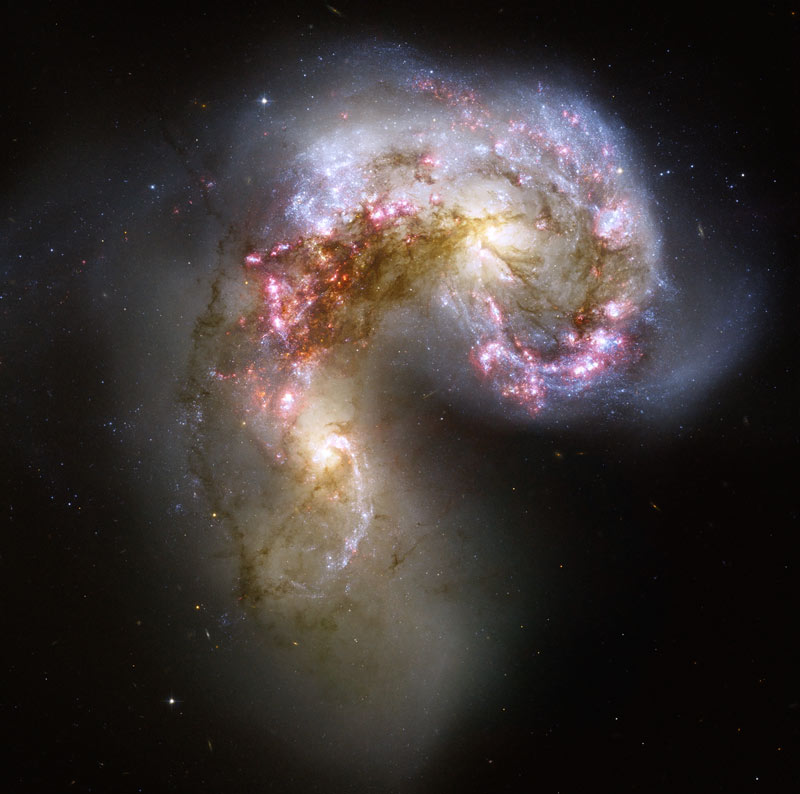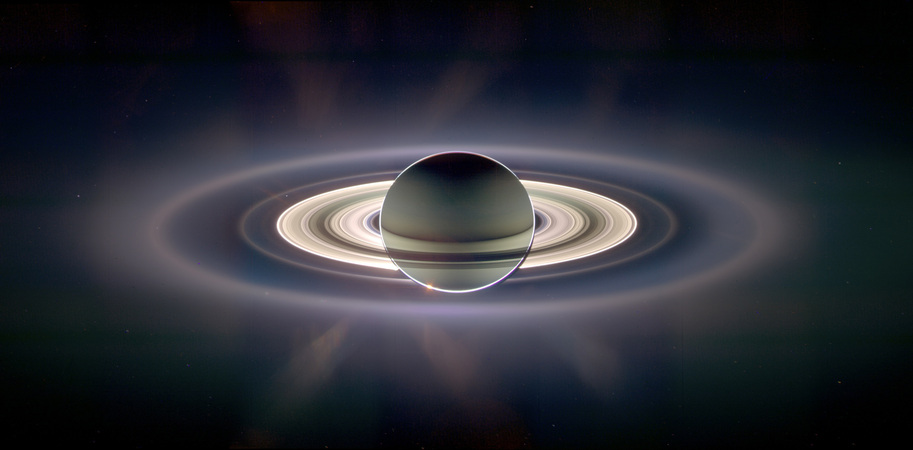- Tue 17 April 2007
- Astronomy
- #Astronomy, #Images
 The image above shows detail of the interacting portion of two colliding galaxies:
NGC
4038 and NGC 4039, otherwise known as the
Antenna Galaxies.
This is an extract of an image taken by the Hubble Space Telescope.
The image above shows detail of the interacting portion of two colliding galaxies:
NGC
4038 and NGC 4039, otherwise known as the
Antenna Galaxies.
This is an extract of an image taken by the Hubble Space Telescope.
 The Antenna Galaxies get their name from their appearance in optical images
taken from the ground. Visible on the left of image to the right (click for
larger version) are two streams of stars that have been thrown out by
gravitational interaction between the galaxies. From studies of the dynamics of
the stars in these galaxies we believe that they started to interact something
like 200-300 million years ago. The tails are the result of this initial
interaction. The remnants of the original galaxy core regions are the two
bright orange hued regions in the right hand pane of this image.
The Antenna Galaxies get their name from their appearance in optical images
taken from the ground. Visible on the left of image to the right (click for
larger version) are two streams of stars that have been thrown out by
gravitational interaction between the galaxies. From studies of the dynamics of
the stars in these galaxies we believe that they started to interact something
like 200-300 million years ago. The tails are the result of this initial
interaction. The remnants of the original galaxy core regions are the two
bright orange hued regions in the right hand pane of this image.
 Despite the typical galaxy containing a billion or more stars it is very
unlikely that the stars themselves would collide with each other: the average
distance between stars being too large. The two galaxies interact with each
other through gravitation resulting in disruption to established stellar
motions. In the dense core regions of typical galaxies are large amounts of
free gas and dust which will merge in the even of collision. Large brown lanes
of dust, obscuring the light from the stars behind, are clearly visible around
the image centre and running down the arm to the bottom of the image. In
regions where the gas and dust reach high enough density we would expect to see
a local peak in star formation. In the image to the left (click for large
version) these star formation regions are numerous and appear as bluish
clusters of hot, new stars surrounded by ionised hydrogen gas (pink glow).
Despite the typical galaxy containing a billion or more stars it is very
unlikely that the stars themselves would collide with each other: the average
distance between stars being too large. The two galaxies interact with each
other through gravitation resulting in disruption to established stellar
motions. In the dense core regions of typical galaxies are large amounts of
free gas and dust which will merge in the even of collision. Large brown lanes
of dust, obscuring the light from the stars behind, are clearly visible around
the image centre and running down the arm to the bottom of the image. In
regions where the gas and dust reach high enough density we would expect to see
a local peak in star formation. In the image to the left (click for large
version) these star formation regions are numerous and appear as bluish
clusters of hot, new stars surrounded by ionised hydrogen gas (pink glow).
I chose this image because it demonstrates the dynamics of galactic interaction and of star formation. It also gives a glimpse of the fate of our own galaxy should it ultimately it collide with the relatively nearby Andromeda Galaxy in a few billion years or so.
Images courtesy of NASA, Hubble Heritage and the STScI
News Release Number: STScI-1997-34
News Release Number: STScI-2006-46
